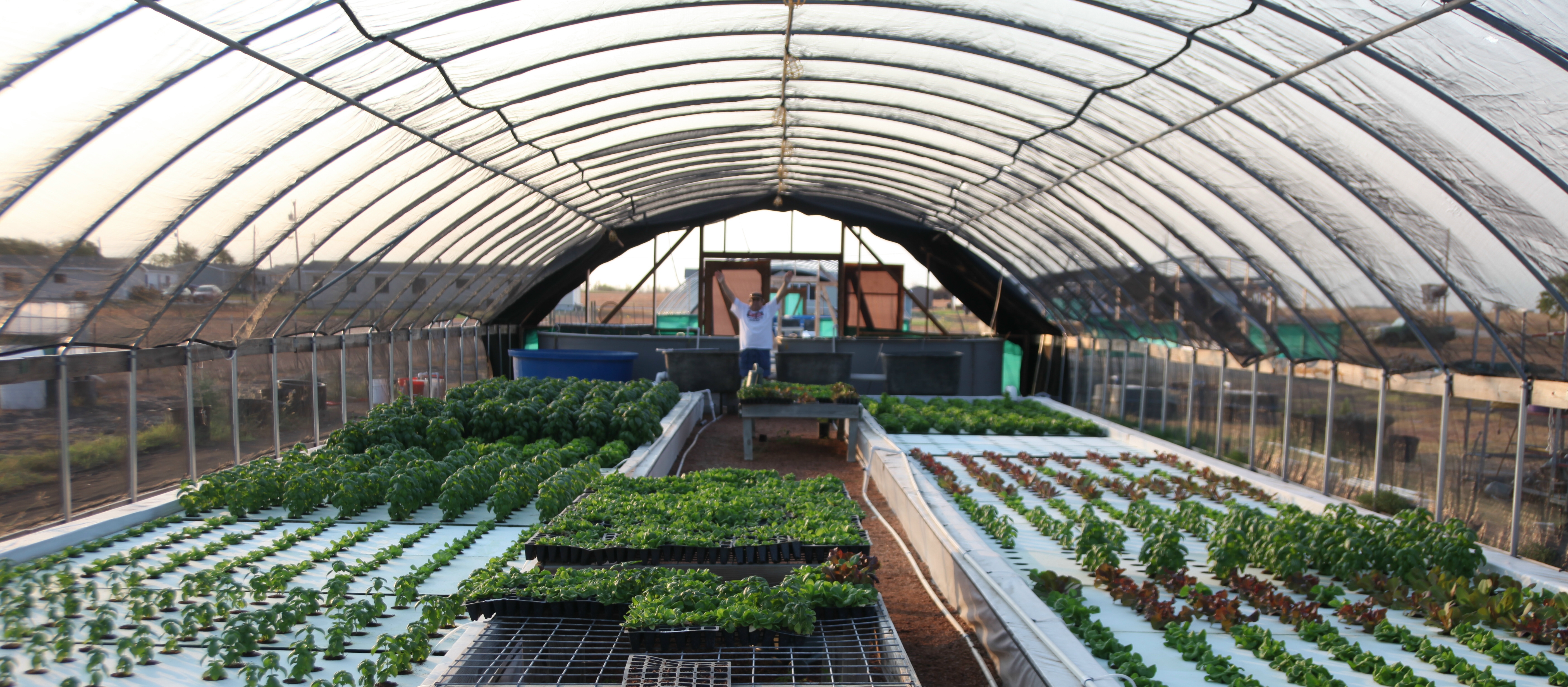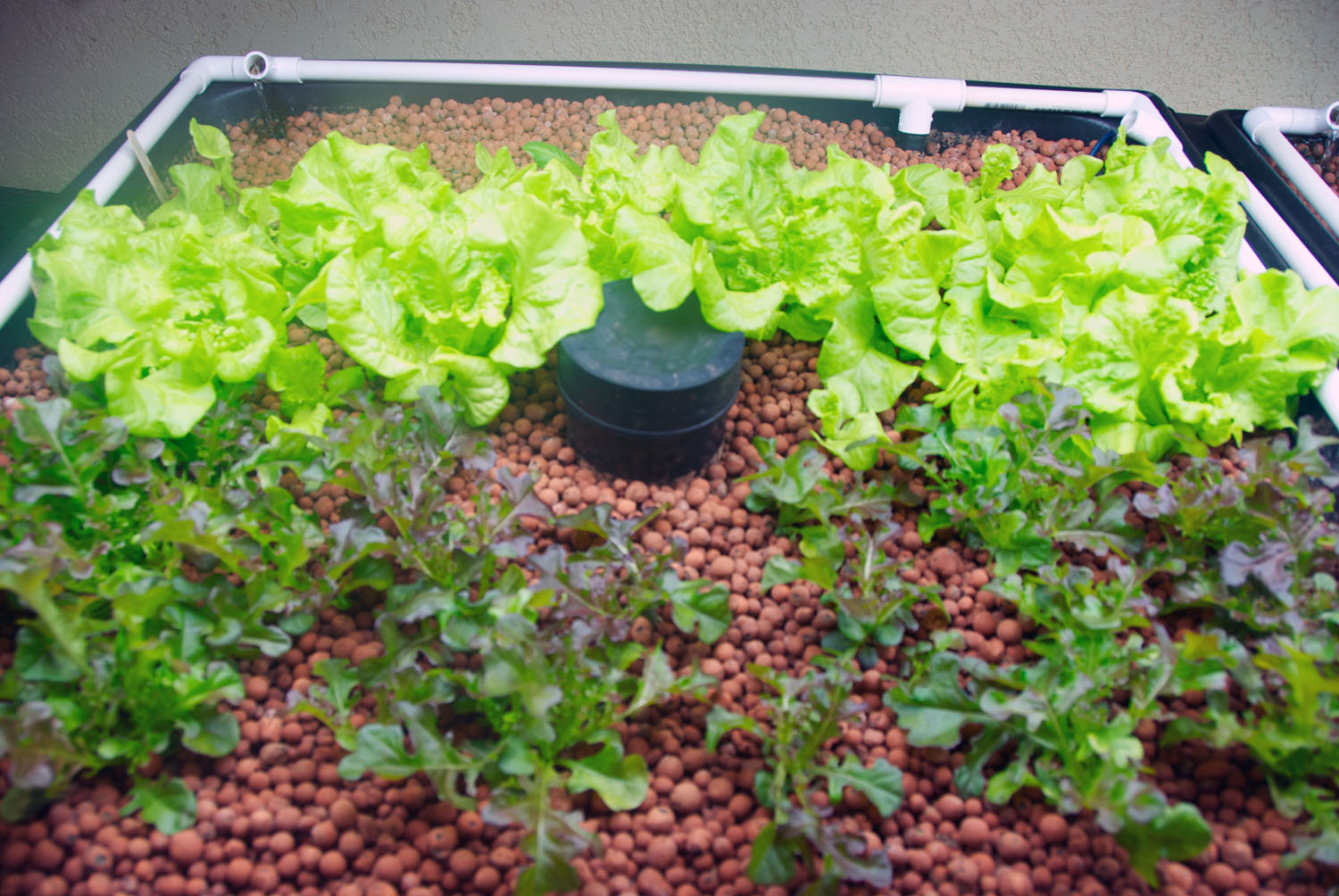Commercial Aquaponics
I've been trying to compare the pros and cons of different types of aquaponic systems recently. Right now, I'm working on constructing a 105 gallon setup at my friend's apartment. We're making a simple flood and drain system, with a 50 gallon grow bed. Filling that grow bed will require almost 200 Liters of expanded clay or some other media. All that media is going to double the cost of our system. We were thinking about alternative methods, such as expanded shale or even something like legos (but we don't have nearly 50 Gallons of legos). The cost of buying a grow media for a large grow bed is so high, that it really got me thinking about alternative systems. Here's a list of pros and cons of various aquaponic systems. If you know anything that I haven't listed, please leave a comment and I'll add it to my list and credit you.
Media Bed Systems
Chift Pist, Simple Flood and Drain (Ebb and Flow), Constant Flood (Continuous Flow)
Pros
· Self Cleaning - The grow media filters out the fish waste
· A media bed performs three (3) filtering functions:
· A media bed performs three (3) filtering functions:
· mechanical (solids removal)
· mineralization (solids breakdown and return to the water)
· bio-filtration
· Media provides better plant support and is more closely related to traditional soil gardening because there is a media to plant into
Cons
· Expensive growing media
A Typical Media Bed
Chift Pist
Pros
· Pump is in sump tank away from fish and wastes
· Water level in fish tank remains constant
· Great if you have a tall fish tank
· Larger water volume because of sump
Cons
· Extra equipment required (sump tank)
· Must have tall fish tank or stand
· Can take up larger footprint
Chift Pist system
Simple Flood and Drain / Ebb and Flow
Pros
· The grow bed can be separated from the fish reservoir
· Simple design - Only two major system components - lower cost
· It is easy to understand and learn
· Great if you have a tall fish tank
Cons
· Requires a timer or bell syphon
· Pump is in fish tank, exposed to fish and waste
· Pump is in fish tank, exposed to fish and waste
· Water level in tank fluctuates a little
Simple Flood and Drain system
Constant Flood / Continuous Flow
Pros
· Same as the Simple Flood and Drain, except when you remove the timer, the system is constantly flooding
Cons
· Pump is in fish tank
· Plant roots can become waterlogged, and areas of the grow bed can become stagnant and anaerobic as the flow of fresh water through the bed moves around any blockages
Constant Flood system
Deep Water Culture (DWC)
Pros
· Resistant against water temperature and pH fluctuations
· Excellent root development due to easy access to oxygen
· There is plenty of surface area for the beneficial bacteria to grow
· Very good for lettuces and leafy vegetables – used extensively by commercial farmers
Cons
· Requires additional filtration to remove solids
· Large plants such as tomatoes, cucumbers, etc. can be difficult, if not impossible, to support
Deep Water Culture system
Nutrient Film Technique (NFT)
Pros
· Both components (fish and plants) may be decoupled from each other whenever required and can/do operate independently of each other if required. I believe this is important in a commercial situation because it allows fish or plant production to continue when and if there are any problems with the other component
Cons
· Water susceptible to temperature fluctuations
· Requires additional filtration to remove solids
· Roots that die and detach from plants can cause blockages in water flow
· Requires additional filtration to remove solids
· Roots that die and detach from plants can cause blockages in water flow
· NFT is only really suitable for certain types of plants, generally leafy green vegetables, larger plants will have root systems that are too big and invasive, or they become too heavy for the lightweight growing gutters
Nutrient Film Technique system
Sources:
- http://www.backyardaquaponics.com/guide-to-aquaponics/running-system/
- http://myownaquaponics.com/home-2/get-started/
- http://aquaponicgardening.com/wp-content/uploads/2011/08/Aquaponic-Gardening-Rules-of-Thumb.pdf
- http://affnan-aquaponics.blogspot.com/2010/12/conceptual-3d-rendering-of-aquaponics.html
- http://www.kijanigrows.com/
- http://globalaquaponics.wordpress.com/tag/commercial-aquaponics/
- http://aquaponicsusa.wordpress.com/2011/12/13/watch-our-humble-seed-lettuce-thrive/
- Comments on reddit that corrected my mistakes: http://redd.it/1d18i8







Nice...
ReplyDeleteHow about connecting different systems together?
ReplyDeleteDifferent plants prefer different methods.
That's a great point. The system I'm currently working on has a DWC grow bed and a media bed system together. Though, the media is in individual pots, not filling the whole grow bed.
DeleteActually, different plants don't prefer different methods. The explanation for people thinking so is that they have a lot of confusion around the scientific process, and how to determine which kind of aquaponic system works best. Here's the truth:
DeleteWe've grown everything from tomatoes to lettuce, to peppers, to mint, to watercress, to pineapples (!) to ten-foot tall banana trees in our deepwater raft systems (https://www.friendlyaquaponics.com/).
The reason all these other methods WORK is that aquaponics is incredibly forgiving, NOT because "this one is the best", or "you need media in your system to grow peppers and nitrogen-hungry plant". We've heard that one a thousand times, and it's just not true. We've also run standard Murray Hallam media bed systems right alongside our deepwater raft systems, and didn't find a single plant in 175 varieties that grew better in either one.
Only the media bed system cost 4 times as much to build, and took around 20 times as much labor to plant and harvest; so that eliminated it as a serious contender for a profitable commercial aquaponic system design.
From an aquaponic farmer who got their farm USDA Certified Organic in 2008; the first one in the world to do so.
With Warm Aloha, Susanne Friend
Great article. We have a system with 2 IBCs running into a 20 ft DWC tank. The cool thing is that the water splits off to two 10 ft grow beds, so 1/3 goes through the biofilter and back to the fish tank, 1/3 goes to the right grow bed and 1/3 goes to the left grow bed.
ReplyDeleteGreat blog of unique ground drainage systems. Its very useful method for plant.
ReplyDeleteVery cool stuff, I am working the DFT system due to space limitations....
ReplyDelete